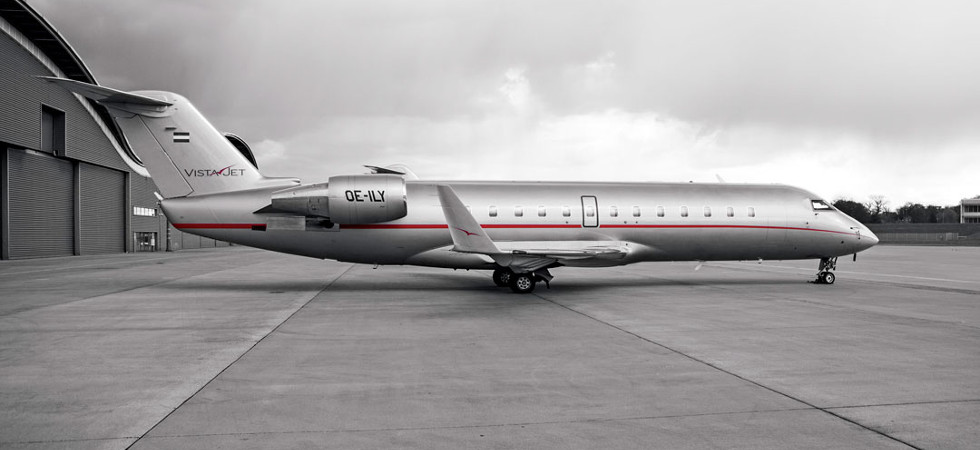By Jayne Jackson, the Lifestyle Editor of BizJetAdvisor China
So you’ve decided to join the ranks of Jay Z (Bombardier Challenger 850), Oprah Winfrey (Bombardier Global Express XRS), Jackie Chan (Embraer Legacy 650), Lord Alan Sugar (Embraer Legacy 650) and a host of CEOs and HNWIs, by purchasing your own private jet.
And why wouldn’t you? The benefits of jet ownership are numerous – privacy, comfort, security, prestige and safety – yes corporate jets are the safest way to fly – as well as the huge advantage for CEOs in terms of time saved by being able to fly non-stop, avoid commercial airline delays, check in queues, and the ability to hold meetings and conduct business privately and securely while in the air.
Lord Sugar, who also has his own pilot’s licence, said recently that he prefers flying privately because he hates the stress of modern travel. “It is my little luxury. Standing around at airports, checking in and all that stuff, gets on my nerves,” he said in an interview earlier this year.
Assuming you have done the maths and your company or personal account can afford to purchase a jet then the process is relatively straightforward, but you will need professional help, and patience.
What’s Your Mission Profile?
The most important thing you can do when considering buying a jet is to find a great aircraft broker. Your broker will work with you to develop your mission profile – that is – where you want to fly, who you want to travel with, how often, whether you need to travel nonstop, and if you want to be able to stand up or sleep in the cabin?
Aviation experts suggest that 350 to 400 hours of flight time per year usually justifies full ownership of a jet for a company’s top executives. If you think you will be flying less than this, you should consider fractional ownership, a jet card or occasional ad-hoc charter.
Depending on the size desired, consideration needs to be given as to how you will use the internal spec of your jet. Will you be allocating space internally for seats, or additional rooms for business or leisure e.g. boardrooms, cinemas, dining rooms, bedrooms or bathroom suites – which are all terrific but will mean less room for passenger seating and luggage?
It is great to dream and look at how the world’s top entrepreneurs have kitted out conventional passenger jets with the latest tech, and luxury finishes. Billionaire Donald Trump bought Microsoft’s Boeing 757 in 2011 for $100 million and then spent a small fortune refitting it with everything from guest suites and an entertainment centre to gold plated seat belts and taps. Russian billionaire and owner of Chelsea football club Roman Abramovich owns a Boeing 767-33A/ER, which is said to feature a dining facility for thirty people and an anti-missile system to provide additional security.
New or Pre-Owned?
Most experts in the business would agree that it is currently a buyer’s market for pre-owned jets, and there has never been a better time to grab yourself a bargain, even with jets under five years of age. This is largely due to a slowdown in the US pre-owned market over the last few years, although business is definitely starting to pick up again now. A used jet for sale will cost anything from US$1.5 million up to about US$45 million. Pre-owned purchase can be a lengthy process due to the many legal, engineering and safety checks required, and longer if you want the whole aircraft refurbished, with costs running from about US$750,000 to $2 million.
A brand new mid-size jet such as the stylish Citation X 2013, one of the fastest civilian airplanes in the world will cost upwards of US$22 million. The waiting lists for some, particularly the longer range aircraft, are also growing as most buyers in markets like China, Brazil and the Middle East are buying brand new jets, and they want them quickly.
The purchase of a new jet can take years, depending on the manufacturer and order book lengths, and even longer if you want a complete design service from one of the world’s top designers like Andrew Winch or Philippe Starcke.
Get the Right Advice
One brokerage firm I speak with regularly is Jet Brokers Europe. Brendan Lodge Business Development Director, offers this advice to someone new to aircraft purchase:
“Choosing a good aircraft broker is just like choosing a good lawyer or accountant. Choose an organisation that has the best skills, knowledge, experience and track record. Make sure that there is no conflict of interest which can often be the case when pilots or operators are chosen to perform the role of the broker, and seek references.
“And be prepared to pay for good advice. That way your broker will seek out all the options available and ensure you buy the best one. Finally, be very wary of non-mandated brokers representing aircraft in the market. Such brokers will normally not be prepared to release serial numbers or tail numbers until a Letter of Intent is signed. If their photos have “Blocked out” tail numbers then they almost certainly do not have a mandate from the seller. Finding out that the aircraft you have purchased is not the right one for your mission profile requirements is a very expensive mistake to make and rectify.”
Finance – To Buy or To Lease?
How you are going to finance this investment, which will probably be the most expensive item you or your company ever purchases, is crucial. You will need to factor in insurance, fuel, catering, pilots, crew and aircraft management fees. And just like a car, your jet will depreciate at a rate of approximately 5% every year.
You can buy an aircraft outright, charter or opt for fractional ownership or a jet card. With fractional ownership, you can purchase a share in a jet aircraft from a management company, and then pay a monthly fee and hourly operations costs.
A good broker will outline the key financial gains for each method; the tax implications, the legal implications and how to maintain the value of your asset – with regular maintenance, overhauls, correct hangerage, and security etc. The broker can also advise of the opportunities to offset those costs such as lending your jet to a charter company when you are not using it. A typical jet charter will cost £1,000 an hour for a small jet like a Cessna Citation Mustang to £6,000 for a Gulfstream 550 – with some of that fee returning to the owner.
Your Aircraft Acquisition Plan should cover a period of at least five years, or as long as you expect to operate that model.
Management
Ideally you will want an FBO (Fixed Base Operation) close to your home or business HQ, where your jet will be kept in a hangar and your aircraft will be managed. There are two management options available; an in-house flight department with your own Chief Pilot, or an aviation management company like TAG or GAMA aviation.
Aircraft management companies’ services include flight planning, legal and aviator compliance across borders, visas, safety, crew, catering, refuelling and maintenance. The cost for management varies between £75,000 and £150,000 per year, depending on the size and usage of the jet.
The Company Perk?
“The aircraft perk tends to be the most valued of any provided to senior executives,” says David Wise, senior principal at Hay Group, a consulting firm. In 2011, the Hay Group reported that 68% of executives of large companies had personal use of a private aircraft—making it the most popular perk.
However, access privileges to the private jets should be used wisely. When he left his post at the top of Citigroup, former CEO Sanford Weill, a man with a net worth of several hundred million dollars, negotiated access to the company’s jets for personal use. It was later reported that he took a jet to a Mexican resort just after Citigroup had taken a large federal bailout. The New York Post headline read: “Pigs Fly: Citi Jets Ex-C.E.O. to Cabo.” Weill hastily issued a press release promising to never use the Citi jet again.
According to a report by Equilar, a research company, the median value of aircraft perks rose to $110,204 in 2011—a 19.2% increase from $92,421 in 2010. USA Today reported that Wynn Resorts CEO Steve Wynn, who was paid $13 million, received perks valued at more than $1.5 million, among them, $942,631 for personal use of the company jet in 2012.
As a result of this and other cases, shareholders are increasingly scrutinizing accounts for legitimate business use. But it’s not all bad news. The CEO of Coca Cola, for example, spent US$122,917 on company jet use last year, according to Equilar, which doesn’t seem excessive when you consider what US$10,000 a month would buy in terms of business class travel.
Jets of the future
If you are worried about your carbon footprint, a new jet will be your best chance of offsetting some of that guilt. Every manufacturer is looking at fuel efficiency and reducing emissions.
In another advance, one small aircraft start-up hopes to sell the world’s fastest business plane, one styled after a military fighter jet. Saker Aircraft is pitching its two-seat S-1 as the only airplane able to fly just under the speed of sound. The plane will have a maximum speed of Mach 0.99 but will cruise at 0.95, or about 720 miles per hour, a good deal faster than most commercial flights. The $5 million jet is aimed for executives who want to zip from Los Angeles to Chicago, or New York to Florida, in about two hours, and is hoping to deliver by 2019.
To find jets for sale and UK Brokers, visit www.Avbuyer.com






















